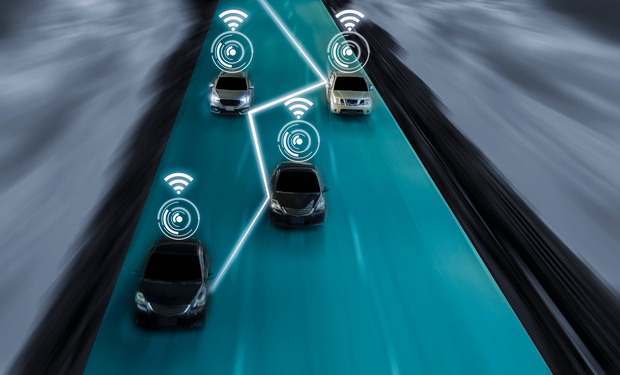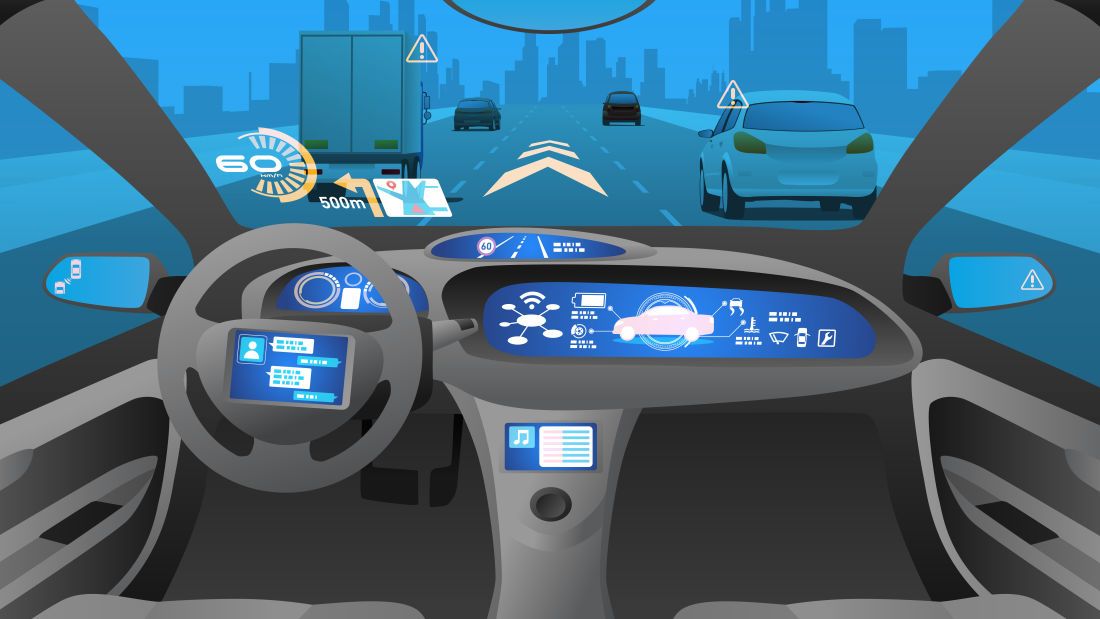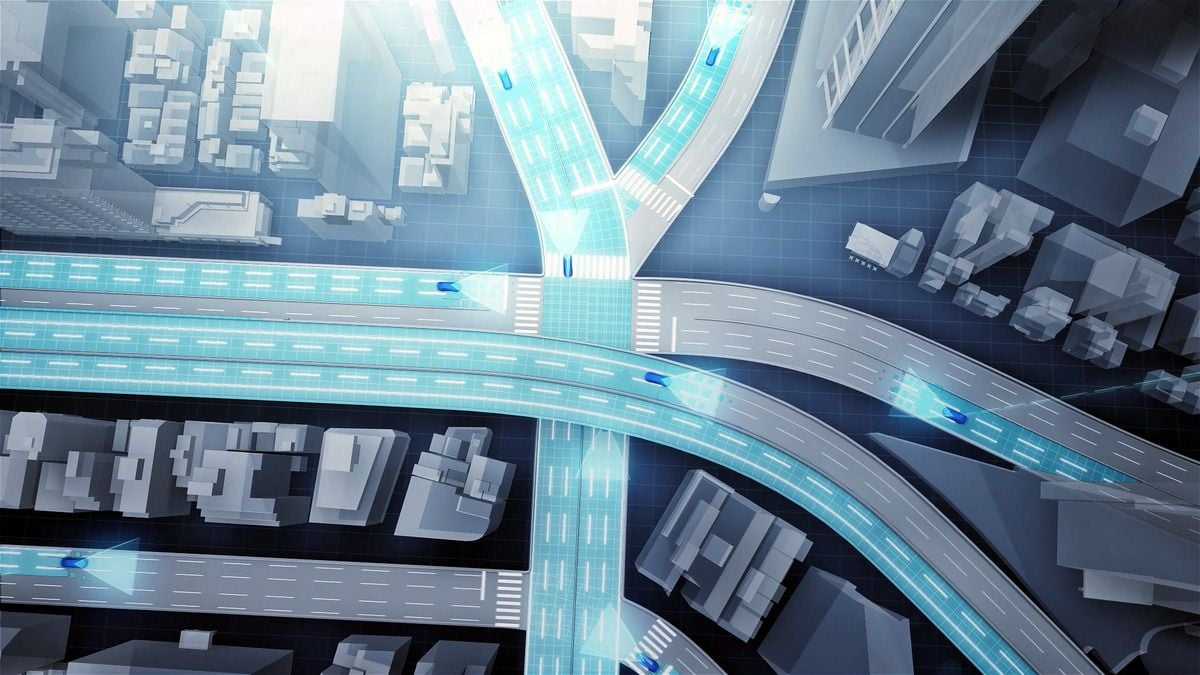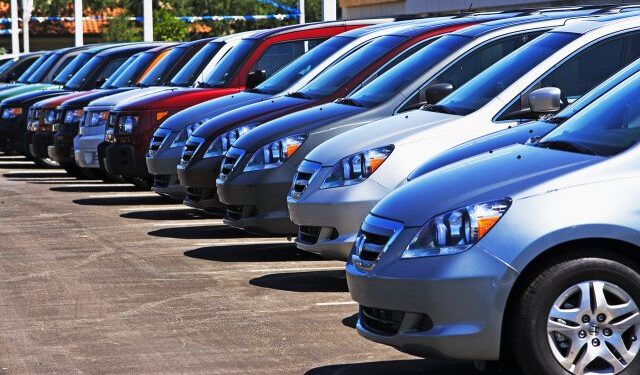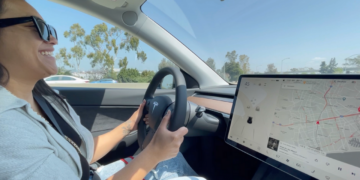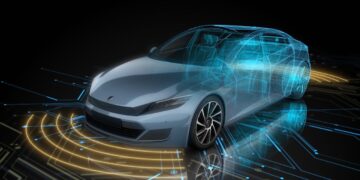In the rapidly evolving world of automotive technology, connected cars have emerged as a groundbreaking innovation that is revolutionizing how we approach road safety. These smart vehicles leverage the power of real-time data, advanced communication systems, and innovative sensor technologies to create safer driving environments and reduce accidents. As digital transformation continues to reshape every industry, the automotive sector is no exception. Today’s connected cars not only offer convenience and efficiency but also play a pivotal role in protecting drivers, passengers, and pedestrians alike.
This comprehensive article delves deep into the realm of connected car technology, exploring how these vehicles enhance real-time road safety. We will examine the underlying technologies, discuss the benefits and challenges of implementing such systems, and explore future trends that promise to further improve driving safety. Whether you’re an automotive enthusiast, a tech-savvy professional, or someone interested in emerging transportation solutions, this article provides a thorough understanding of how connected cars are transforming our roads.
Overview of Connected Car Technology
Connected car technology represents a significant leap forward from traditional vehicles. At its core, a connected car is a vehicle equipped with internet access and a range of sensors that allow it to collect, share, and analyze data in real time. This connectivity creates a networked environment where vehicles communicate not only with each other (Vehicle-to-Vehicle, or V2V) but also with road infrastructure (Vehicle-to-Infrastructure, or V2I) and even with pedestrians (Vehicle-to-Pedestrian, or V2P).
The concept of connected cars has evolved over the years, from simple in-car infotainment systems to complex networks that incorporate artificial intelligence (AI) and the Internet of Things (IoT). These vehicles are designed to enhance the overall driving experience by improving navigation, optimizing fuel efficiency, and, most importantly, boosting road safety.
A. Key Components of Connected Cars
Connected cars rely on several critical components to function effectively:
A. Sensors and Cameras:
- Collect data on vehicle performance, surrounding environment, and driver behavior.
- Include radar, LIDAR, ultrasonic sensors, and high-definition cameras.
B. Telematics Systems:
- Enable real-time communication between vehicles and external systems.
- Facilitate data transfer regarding traffic conditions, weather, and road hazards.
C. Communication Modules:
- Use wireless technologies like 4G, 5G, and Dedicated Short-Range Communications (DSRC) to transmit data instantly.
D. Cloud Computing:
- Provides the infrastructure for processing and analyzing large volumes of data.
- Supports the integration of data from multiple sources to generate actionable insights.
E. On-Board Computing Systems:
- Manage and process the sensor data in real time.
- Run advanced algorithms that support decision-making processes for driver assistance and safety features.
How Connected Cars Enhance Road Safety
Connected cars significantly improve road safety by providing a platform for real-time data exchange and advanced safety features. These systems help mitigate risks on the road by offering early warnings, improving traffic flow, and facilitating rapid emergency responses.
A. Real-Time Hazard Detection and Alerts
One of the most critical safety features of connected cars is their ability to detect hazards in real time. By constantly monitoring the vehicle’s surroundings, connected systems can identify potential dangers—such as sudden stops, obstacles, or erratic driving patterns of nearby vehicles—and alert drivers immediately.
-
Collision Avoidance Systems:
These systems use sensor data to calculate the distance and speed of approaching objects. When a potential collision is detected, the system alerts the driver and, in some cases, initiates automatic braking to prevent an accident. -
Road Condition Monitoring:
Connected cars can detect changes in road conditions, such as icy surfaces or potholes, and warn drivers to adjust their speed accordingly. -
Dynamic Routing:
By analyzing real-time traffic data, connected cars can suggest alternative routes to avoid congested or hazardous areas, thereby reducing the risk of accidents.
B. Vehicle-to-Vehicle (V2V) Communication
Connected cars communicate with each other through V2V communication systems, creating a network where vehicles share critical information such as speed, location, and driving direction. This exchange of information allows cars to coordinate maneuvers, such as merging or lane changes, reducing the likelihood of collisions.
-
Cooperative Adaptive Cruise Control (CACC):
CACC systems enable vehicles to maintain safe distances by automatically adjusting speeds in response to the behavior of the car ahead. -
Intersection Assistance:
Vehicles approaching intersections can share their data to manage crossing sequences, reducing the risk of accidents in busy junctions.
C. Vehicle-to-Infrastructure (V2I) Integration
V2I communication is another pillar of connected car technology. By interacting with traffic signals, road sensors, and other infrastructure components, connected cars receive real-time updates on traffic flow, signal timings, and road work alerts.
-
Smart Traffic Signals:
These signals adjust their timing based on the volume of traffic, thereby reducing stop-and-go conditions and the likelihood of rear-end collisions. -
Emergency Response Coordination:
In the event of an accident, connected vehicles can automatically notify emergency services and provide precise location data, enabling faster response times.
D. Enhanced Driver Assistance Systems
Advanced Driver Assistance Systems (ADAS) are integral to connected cars, offering features that enhance driver awareness and automate critical safety functions. ADAS includes technologies such as lane departure warnings, blind-spot detection, and driver drowsiness alerts. These systems use a combination of sensors and onboard computing to monitor driving conditions and provide timely feedback to the driver.
-
Lane Keeping Assist:
This feature helps drivers stay within their lanes by making subtle adjustments to the steering system if the vehicle begins to drift. -
Adaptive Headlights:
Connected cars can adjust headlight intensity and direction based on the vehicle’s speed and road curvature, improving visibility during night driving. -
Driver Monitoring Systems:
By tracking eye movement and head position, these systems assess driver alertness and suggest breaks if signs of fatigue are detected.
Technologies Behind Connected Cars
Connected car technology is underpinned by a variety of advanced technologies that work in concert to provide a seamless and safe driving experience.
A. Internet of Things (IoT)
The IoT is the backbone of connected car ecosystems. It enables vehicles to communicate with external devices and systems, creating a network of interconnected devices that exchange data continuously. This connectivity is crucial for real-time updates and dynamic responses to road conditions.
B. 5G and Wireless Communication
The advent of 5G technology has significantly enhanced the capabilities of connected cars. With higher data transfer speeds, reduced latency, and improved network reliability, 5G enables instantaneous communication between vehicles and infrastructure. This fast communication is vital for applications such as collision avoidance and real-time navigation.
C. Cloud Computing and Big Data Analytics
Cloud computing platforms provide the necessary infrastructure for storing and processing the massive amounts of data generated by connected cars. Big data analytics tools then sift through this information to identify trends, predict potential hazards, and optimize vehicle performance.
D. Artificial Intelligence and Machine Learning
AI and machine learning algorithms play a pivotal role in processing sensor data and making real-time decisions. These technologies help in:
A. Pattern Recognition:
- Identifying potential hazards by analyzing historical data and current driving conditions.
B. Predictive Analytics:
- Forecasting future traffic scenarios and suggesting optimal driving routes.
C. Autonomous Decision-Making:
- Enabling vehicles to react to emergencies, such as sudden obstacles or adverse weather conditions, without human intervention.
E. Advanced Sensor Technologies
Modern vehicles are equipped with a myriad of sensors that collect detailed information about the driving environment. These sensors include:
A. Radar and LIDAR:
- Provide accurate distance measurements and 3D mapping of surroundings.
B. Ultrasonic Sensors:
- Detect objects in close proximity, such as when parking or maneuvering in tight spaces.
C. Cameras:
- Capture high-resolution images to aid in object recognition and lane detection.
Benefits of Connected Cars for Road Safety
The integration of connected car technology into modern vehicles offers a wide range of benefits that extend beyond individual driver safety. These benefits contribute to a safer, more efficient, and environmentally friendly transportation ecosystem.
A. Reduced Accident Rates
One of the most significant advantages of connected cars is the reduction in accident rates. By providing real-time alerts and automated safety interventions, these vehicles help prevent collisions and mitigate the severity of accidents when they do occur.
-
Automatic Emergency Braking (AEB):
AEB systems detect imminent collisions and apply brakes automatically to reduce impact forces. -
Crash Avoidance Systems:
By analyzing data from multiple vehicles and infrastructure sources, connected cars can predict dangerous situations and alert drivers accordingly.
B. Improved Traffic Management
Connected cars contribute to better traffic flow and reduced congestion. Real-time data exchange between vehicles and traffic management systems allows for dynamic routing and optimized signal timings, resulting in smoother traffic conditions and fewer bottlenecks.
-
Dynamic Traffic Routing:
Vehicles can be guided along less congested routes based on real-time traffic data, reducing travel times and stress on road networks. -
Congestion Mitigation:
By synchronizing vehicle speeds and maintaining consistent flow, connected cars help minimize stop-and-go traffic, which is a common cause of rear-end collisions.
C. Enhanced Emergency Response
In the event of an accident, every second counts. Connected car technology enables faster emergency response by automatically alerting rescue services and providing precise location information. This rapid response can significantly reduce the time taken to reach accident sites, ultimately saving lives.
-
Automated Crash Notification:
When a collision occurs, the vehicle’s systems send an immediate alert to emergency services, complete with location and severity details. -
Real-Time Incident Mapping:
Traffic management centers can monitor accidents as they occur and deploy resources efficiently.
D. Environmental and Economic Benefits
Safer roads mean fewer accidents, which translates into lower medical costs, reduced vehicle repair expenses, and minimal economic disruption due to traffic delays. Additionally, improved traffic flow can lead to lower fuel consumption and reduced emissions, contributing positively to environmental sustainability.
Real-Time Data Integration and Analytics
The backbone of connected car safety features is the effective integration and analysis of real-time data. The ability to process vast amounts of information from multiple sources in real time allows connected cars to respond quickly to changing road conditions.
A. Data Collection and Processing
Connected cars gather data through an array of sensors and communication devices. This data includes information on vehicle speed, distance to nearby objects, weather conditions, and traffic density. The collected data is then transmitted to cloud-based platforms for processing.
-
Edge Computing:
In some systems, data processing occurs directly within the vehicle using on-board computers. This minimizes latency and allows for instantaneous responses to hazards. -
Centralized Analytics:
Cloud computing platforms aggregate data from multiple vehicles to identify broader traffic patterns and potential risk areas. This centralized approach enables proactive measures to prevent accidents on a large scale.
B. Machine Learning for Predictive Safety
Machine learning algorithms analyze historical data and current sensor inputs to predict potential safety risks. These predictive models can forecast dangerous situations before they occur, allowing the vehicle to take preventive measures.
-
Behavior Analysis:
AI systems assess driver behavior patterns and adjust safety protocols accordingly. For example, if a driver is exhibiting signs of fatigue, the system can issue warnings or suggest a break. -
Incident Prediction:
By analyzing data trends, connected cars can predict the likelihood of an accident in a specific area and alert drivers to exercise caution.
Challenges and Solutions in Connected Car Systems
While the benefits of connected car technology are considerable, the deployment of these systems comes with its own set of challenges. Addressing these issues is crucial for ensuring the widespread adoption and long-term success of connected vehicles.
A. Security and Privacy Concerns
One of the primary challenges of connected car systems is ensuring robust cybersecurity and protecting user privacy. As vehicles become more interconnected, they become potential targets for cyberattacks.
-
Data Encryption:
Implementing strong encryption protocols is essential for safeguarding the data transmitted between vehicles and cloud servers. -
Access Control:
Strict access control measures help prevent unauthorized access to vehicle systems and sensitive information. -
Regular Software Updates:
Keeping systems up-to-date with the latest security patches minimizes vulnerabilities and protects against emerging threats.
B. Interoperability and Standardization
Connected cars from different manufacturers must communicate seamlessly to ensure effective safety measures. The lack of standardized communication protocols can lead to compatibility issues.
-
Industry Collaboration:
Automakers, tech companies, and regulatory bodies need to work together to establish common standards for data exchange and system interoperability. -
Regulatory Frameworks:
Governments and industry organizations are increasingly focused on developing guidelines that promote uniformity in connected car technologies.
C. Infrastructure and Network Limitations
Effective connected car systems require robust communication networks and supportive infrastructure. In areas with limited connectivity, the benefits of real-time data exchange may be diminished.
-
Investment in 5G Networks:
The rollout of 5G technology is crucial for providing the low latency and high bandwidth required by connected vehicles. -
Smart Infrastructure:
Upgrading road infrastructure to support V2I communication can enhance the effectiveness of connected car systems.
Future Trends in Connected Car Technology
As technology continues to evolve, the future of connected cars looks promising. Several emerging trends are poised to further enhance real-time road safety and revolutionize the automotive landscape.
A. Integration with Autonomous Driving
The convergence of connected car technology and autonomous driving is set to create even safer roads. Self-driving cars rely heavily on real-time data and advanced sensor systems to navigate complex environments.
-
Enhanced Decision-Making:
Autonomous vehicles equipped with connected technology can make more informed decisions by leveraging data from other vehicles and infrastructure. -
Increased Safety Margins:
The combination of automated driving and real-time communication reduces human error, which is a leading cause of accidents.
B. Expansion of IoT in Transportation
The Internet of Things will continue to expand within the transportation sector, leading to smarter and more responsive road networks.
-
Smart Cities:
Urban areas will increasingly integrate connected vehicles with smart city infrastructure, improving traffic management and reducing congestion. -
Comprehensive Data Ecosystems:
The seamless integration of data from various sources—ranging from personal devices to municipal sensors—will enable predictive analytics that preemptively address potential hazards.
C. Advances in AI and Predictive Analytics
The future will see further enhancements in AI-driven predictive analytics, enabling even more sophisticated safety interventions.
-
Real-Time Adaptation:
Vehicles will continuously learn from new data, allowing them to adapt to changing conditions with unprecedented accuracy. -
Personalized Safety Systems:
Customizable safety protocols based on individual driving habits and environmental factors will become the norm, providing tailored protection for every driver.
Case Studies and Real-World Implementations
Real-world examples illustrate how connected car technology is already making a significant impact on road safety. These case studies demonstrate practical applications and the benefits of integrating advanced connectivity solutions in various regions.
A. Urban Mobility Projects
Several cities around the world are piloting smart transportation projects that leverage connected car technology to enhance safety and efficiency.
-
City-Wide V2I Networks:
In major metropolitan areas, integrated communication networks allow vehicles to interact with traffic signals and road sensors. These networks help reduce congestion and improve emergency response times. -
Adaptive Traffic Control:
Some cities have implemented systems where traffic lights adjust dynamically based on real-time data from connected vehicles, significantly reducing intersection-related accidents.
B. Automotive Manufacturer Initiatives
Leading automakers are at the forefront of integrating connected car systems into their new models, incorporating state-of-the-art safety features that leverage real-time data.
-
Advanced ADAS Features:
Many new vehicle models now come with sophisticated driver assistance systems that utilize sensor data and cloud analytics to provide proactive safety measures. -
Over-the-Air Updates:
Regular software updates ensure that vehicles remain equipped with the latest safety protocols, addressing vulnerabilities as soon as they are identified.
C. Cross-Industry Collaborations
Collaborative efforts between automotive companies, technology firms, and government agencies are driving innovation in connected car systems.
-
Joint Research Projects:
Multinational research initiatives are exploring ways to integrate connected car technology with other emerging technologies such as augmented reality (AR) and advanced machine learning models. -
Pilot Programs:
Numerous pilot programs are testing the effectiveness of connected car systems in reducing accidents, with preliminary results showing promising improvements in road safety metrics.
Regulatory and Legal Considerations
The rapid advancement of connected car technology brings with it a host of regulatory and legal challenges. Governments around the world are working to develop frameworks that ensure the safety, security, and privacy of connected vehicles without stifling innovation.
A. Data Privacy Regulations
As connected cars collect and transmit vast amounts of data, ensuring the privacy of drivers is paramount. Regulatory frameworks such as the General Data Protection Regulation (GDPR) in Europe serve as a model for safeguarding personal information.
-
Informed Consent:
Manufacturers must ensure that drivers are aware of what data is being collected and how it will be used. -
Data Anonymization:
Techniques for anonymizing data can help protect individual privacy while still allowing for valuable analytics.
B. Safety Standards and Certification
Regulatory bodies are also focused on establishing safety standards for connected car technologies. Certification processes help ensure that vehicles meet stringent criteria before they hit the market.
-
Compliance Testing:
Rigorous testing procedures are necessary to verify that all systems function correctly under various conditions. -
Ongoing Monitoring:
Continuous monitoring and periodic reviews help maintain safety standards as technology evolves.
Collaboration Between Automakers and Tech Firms
The success of connected car technology hinges on the collaboration between automotive manufacturers and technology companies. These partnerships bring together expertise in vehicle engineering, software development, and data analytics, paving the way for innovative safety solutions.
A. Shared Research and Development
Joint R&D initiatives are fostering innovation and accelerating the development of new safety features. By combining resources and expertise, companies can overcome technical challenges and bring advanced technologies to market more quickly.
B. Integrated Platforms and Ecosystems
Collaboration often leads to the development of integrated platforms that seamlessly combine hardware and software components. These ecosystems support real-time data sharing and provide a unified interface for managing vehicle safety systems.
C. Industry-Wide Standards
Establishing common standards for communication and data exchange is critical for ensuring interoperability among different manufacturers’ systems. Industry-wide standards facilitate smoother integration and enhance overall road safety.
Best Practices for Implementing Connected Car Systems
For businesses and government entities looking to implement connected car technology, following best practices is essential to maximize benefits and minimize risks.
A. Comprehensive Planning and Pilot Testing
Before deploying connected car systems on a large scale, it is vital to engage in thorough planning and pilot testing. This phase helps identify potential issues and refine the technology.
-
Pilot Programs:
Launch small-scale projects to test the functionality and safety of the systems in real-world conditions. -
Stakeholder Engagement:
Collaborate with local authorities, emergency services, and community representatives to ensure the system meets local needs.
B. Robust Cybersecurity Measures
Given the sensitive nature of the data involved, implementing robust cybersecurity protocols is non-negotiable. Regular audits and updates help keep the systems secure.
-
Encryption and Secure Communication:
Utilize advanced encryption techniques to protect data in transit. -
Regular Security Audits:
Conduct periodic audits to identify vulnerabilities and update systems accordingly.
C. Continuous Training and Public Awareness
Educating drivers and stakeholders about the benefits and safe usage of connected car technology is crucial for widespread adoption.
-
Driver Education Programs:
Offer training sessions to help drivers understand how to use the technology and respond to alerts. -
Public Information Campaigns:
Increase awareness about the safety features and benefits of connected cars to build public trust and acceptance.
Conclusion
Connected car technology is transforming the automotive landscape by enhancing real-time road safety through advanced data integration, state-of-the-art sensor systems, and seamless communication networks. These vehicles not only mitigate risks by providing timely alerts and automated safety interventions but also pave the way for a future where roads are safer, traffic flows more efficiently, and emergency responses are faster.
As the technology continues to evolve, further integration with autonomous systems, expansion of IoT networks, and advancements in AI will drive even greater safety improvements. While challenges such as cybersecurity, regulatory compliance, and infrastructure limitations remain, the benefits of connected car systems are undeniable. Collaborative efforts among automakers, tech companies, and regulatory bodies are key to overcoming these challenges and ensuring that connected cars fulfill their promise of safer roads.
Investing in connected car technology today is not just a step toward innovation—it is a commitment to creating a future where every journey is safer and every life is protected. As we embrace this new era of smart mobility, continuous improvement and adaptation will ensure that connected cars remain at the forefront of road safety advancements.

